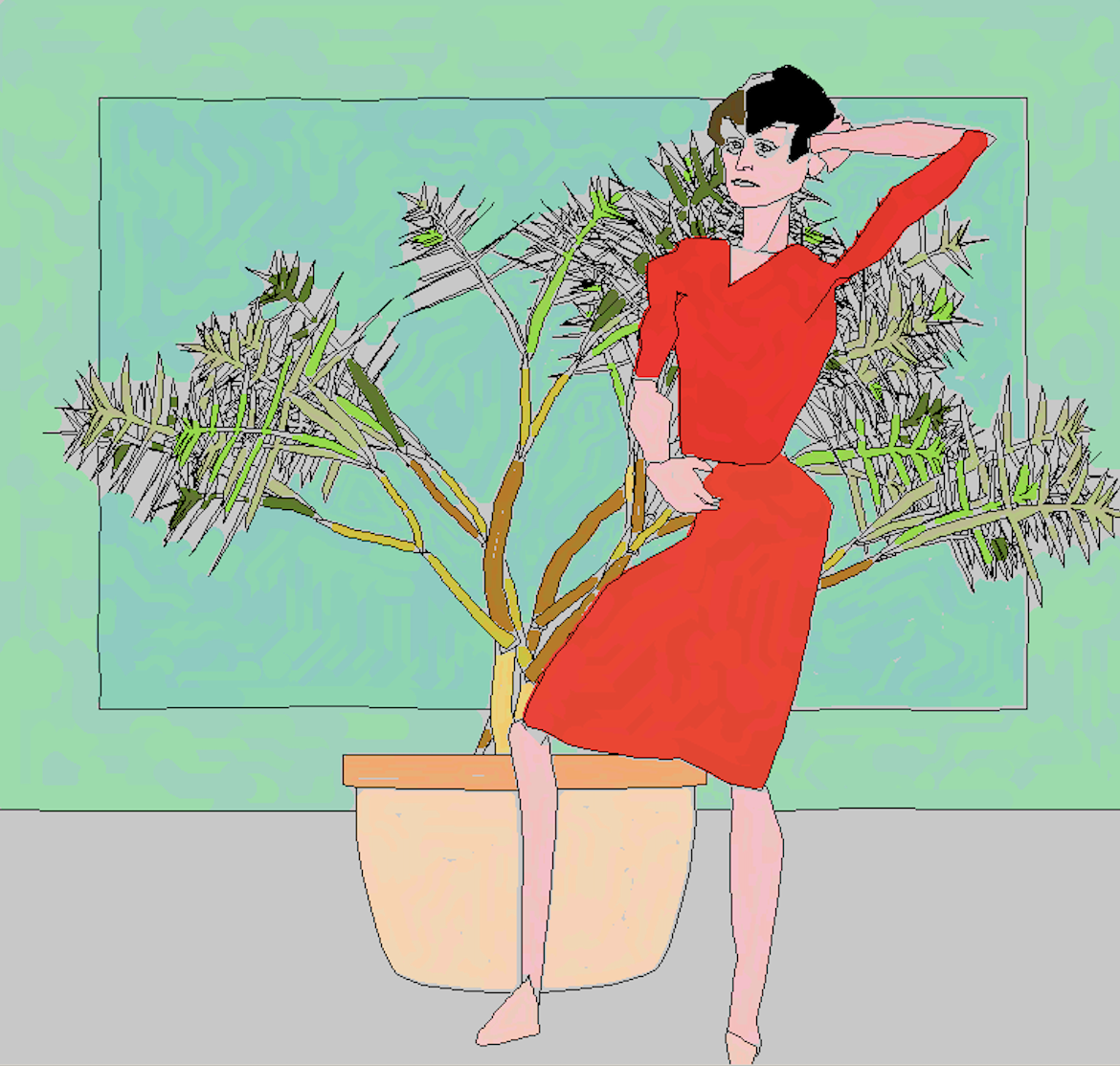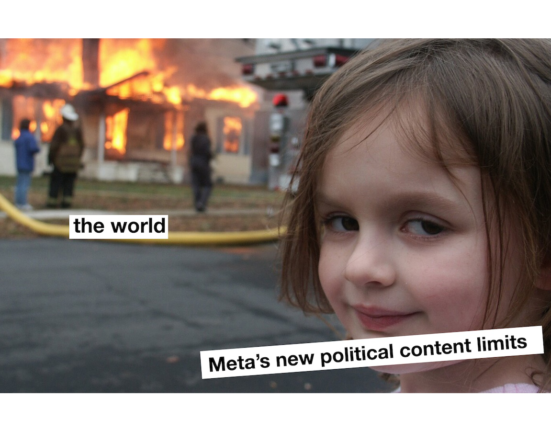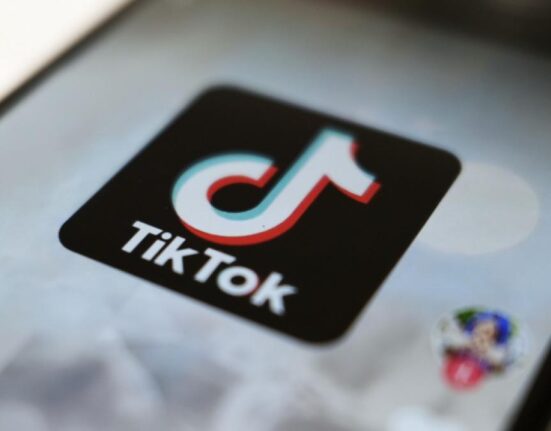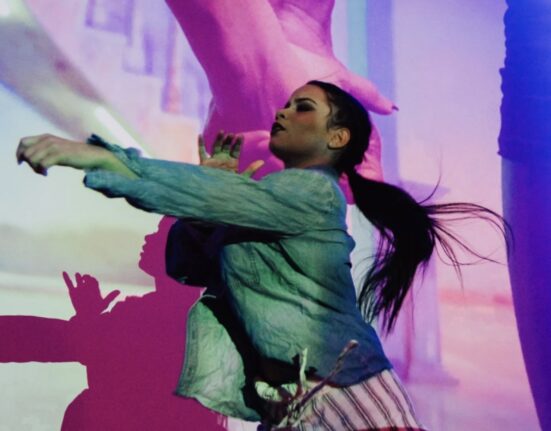The late British painter Harold Cohen once joked that he could be the only artist to have a posthumous show of new work. He had after all created a generative art system, one so autonomous that it could theoretically produce work indefinitely, outlasting its maker. His remark was intended a mere quip, but turns out, it’s quite a prophetic one.
At an upcoming exhibition at the Whitney Museum of American Art, Cohen’s A.I.-powered art-making program, AARON, will be revisited—and revived. The show, titled “Harold Cohen: AARON,” will explore how the artist built the program in phases beginning in the late 1960s, and feature paintings and drawings that AARON has previously generated. It will also produce new work: the software, linked to pen plotters, will demonstrate its drawing process live in the galleries.
For Christiane Paul, the museum’s curator of digital art, this view into an early form of machine-powered art-making is newly relevant at a time when A.I. tools are increasingly prevalent. More so, it underscores art’s long engagement with A.I. through Cohen’s decades-spanning experimentation with the technology.
“AARON invites us to rethink what constitutes art and the intentionality of art in comparison to the current A.I. models,” she said over the phone. “At its core is this freehand line algorithm that Harold created. It really is a continuation of his work and at the same time, a radical break with painting and a shift to something entirely different.”
Harold Cohen, AARON KCAT (2001). Whitney Museum of American Art, New York; purchase, with funds from the Digital Art Committee 2023.20. © Harold Cohen Trust.
While Cohen thrived as a painter in the early 1960s—he represented the U.K. at the Venice Biennale in 1966—he swiftly grew frustrated with his practice. Out of curiosity, he picked up coding with the thought of creating “a program to do some of the things human beings do when they make representations,” he recalled in 2004.
Cohen’s burgeoning interest in programming coincided with his 1968 move to California, where he took up a professorship at the University of California, San Diego. There, he first conceived and built out a rule-based drawing software, programmed to autonomously create “evocative” images. It was coded, Paul explained, “as an art-making program that has external knowledge of the world and the objects in it, and internal knowledge on how to represent these objects.”
The artist called his creation AARON after the biblical figure who served as a mediator for Moses. In a similar way, the program would be Cohen’s creative broker.
Harold Cohen, AARON KCAT (2001). Whitney Museum of American Art, New York; purchase, with funds from the Digital Art Committee 2023.20. © Harold Cohen Trust.
From 1973, Cohen would create increasingly complex iterations of AARON as his algorithm grew in sophistication to include compositional rules and other drawing strategies. Where the early models could only generate black-and-white shapes, the 1980s versions could create figures in a visual space and the 2000s editions abstract floral patterns. These works have since been collected by museums from the V&A to the Tate.
Since 2017, with the launch of the Whitney’s acquisition committee focused on digital art, Paul has sought to collect variations of the AARON software, which number around 60. “What I would like to do is create for the Whitney an archive of the [program’s] crucial phases,” she said.
So far, the museum has acquired the more well-known KCAT version, which Cohen created in partnership with scientist Raymond Kurzweil’s CyberArt Technologies in 2001, and another from its so-called jungle phase around 2002. The institution has also just collected the 1960s iteration of Cohen’s freehand line algorithm, long before it was named AARON, which produced the artworks he exhibited at the 1972 show, “Three Behaviors for the Partitioning of Space,” at the L.A. County Museum of Art.
Harold Cohen, AARON Gijon (2007). Whitney Museum of American Art, New York; purchase, with funds from the Digital Art Committee 2023.21. © Harold Cohen Trust.
At the Whitney exhibition, two plotters will be creating from the KCAT software in black-and-white and from the 1960s program, which was restored, Paul said, using code that was discovered in one of Cohen’s notebooks. Originally written in BASIC, the code had to be recreated in Python. “As Harold’s son Paul Cohen put it,” she said, “we resurrected a dinosaur from three different skeletons.”
Also resurfacing at the show are “questions of authorship and agency in the collaboration with machines,” Paul added. They’re issues that similarly entangle conversations about A.I. today. But, as she pointed out, where contemporary text-to-image generators work off a database of questionably scraped material, AARON has been coded entirely by Cohen and its outputs are a result of their partnership.
So, an argument could be made that Cohen could never have his quipped-about posthumous show of new work—alas. “What AARON entails is Harold Cohen as an artist, the software itself, and the collaboration between the two, that constant back-and-forth,” said Paul. “That, of course, does not exist anymore.”
It’s something that Cohen himself conceded in 2011, acknowledging that “AARON will end when I end” since probably nobody would want to pick up his collaborator where he left off. “People,” he added, “should build up their own other selves.”
“Harold Cohen: AARON” is on view at the Whitney Museum of American Art, 99 Gansevoort Street, New York, February 3 through May.
More Trending Stories:
Art Dealers Christina and Emmanuel Di Donna on Their Special Holiday Rituals
Stefanie Heinze Paints Richly Ambiguous Worlds. Collectors Are Obsessed
Inspector Schachter Uncovers Allegations Regarding the Latest Art World Scandal—And It’s a Doozy
Archaeologists Call Foul on the Purported Discovery of a 27,000-Year-Old Pyramid
The Sprawling Legal Dispute Between Yves Bouvier and Dmitry Rybolovlev Is Finally Over
Follow Artnet News on Facebook:
Want to stay ahead of the art world? Subscribe to our newsletter to get the breaking news, eye-opening interviews, and incisive critical takes that drive the conversation forward.







